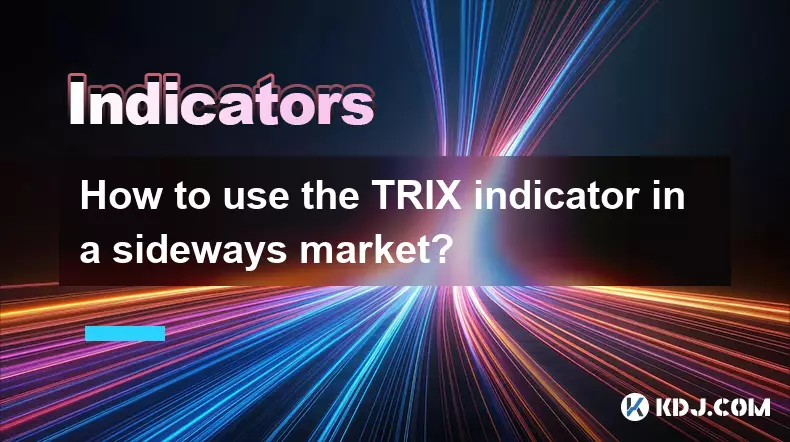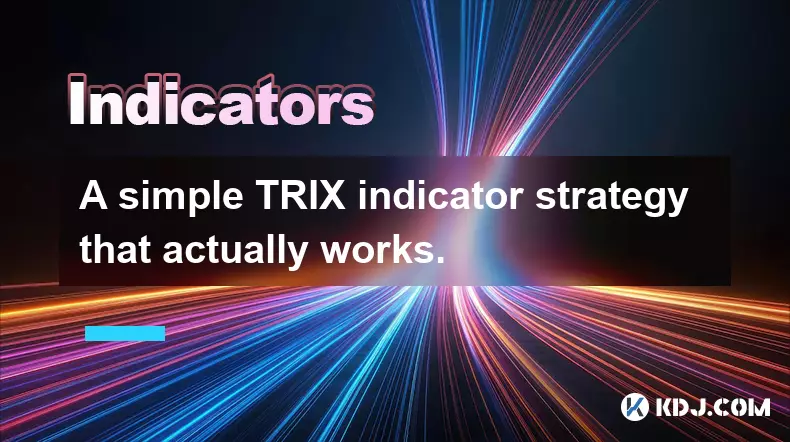-
 bitcoin
bitcoin $105968.894684 USD
4.17% -
 ethereum
ethereum $3639.320047 USD
7.62% -
 tether
tether $1.000339 USD
0.06% -
 xrp
xrp $2.407774 USD
5.96% -
 bnb
bnb $1011.704193 USD
2.28% -
 solana
solana $166.942754 USD
6.37% -
 usd-coin
usd-coin $1.000143 USD
0.03% -
 tron
tron $0.291515 USD
0.25% -
 dogecoin
dogecoin $0.181682 USD
4.06% -
 cardano
cardano $0.585450 USD
4.54% -
 hyperliquid
hyperliquid $42.099968 USD
5.20% -
 chainlink
chainlink $16.160745 USD
5.45% -
 zcash
zcash $645.269648 USD
12.96% -
 bitcoin-cash
bitcoin-cash $507.430338 USD
2.80% -
 stellar
stellar $0.290357 USD
3.69%
How to combine the WMA indicator with RSI for better signals?
Combining WMA and RSI enhances crypto trading signals by aligning trend direction with momentum, improving entry/exit timing in volatile markets.
Nov 08, 2025 at 06:40 pm

Understanding the WMA and RSI Indicators
1. The Weighted Moving Average (WMA) assigns greater importance to recent price data, making it more responsive to new information compared to simple moving averages. This sensitivity allows traders to detect trend shifts earlier, especially in volatile crypto markets where price movements can be sudden and sharp.
2. The Relative Strength Index (RSI) is a momentum oscillator that measures the speed and change of price movements on a scale from 0 to 100. It helps identify overbought conditions (typically above 70) and oversold conditions (usually below 30), offering insights into potential reversal points.
3. When used independently, both indicators have limitations. WMA may generate false signals during sideways markets, while RSI can remain in overbought or oversold zones for extended periods during strong trends. Combining them increases signal reliability by filtering out noise.
4. In the cryptocurrency space, where sentiment and macro factors heavily influence prices, using both tools together provides a layered approach. The WMA identifies directional bias, while RSI confirms whether momentum supports the trend or suggests exhaustion.
Enhanced Entry and Exit Strategies
1. A bullish signal occurs when the price crosses above the WMA line while the RSI moves upward from below 30, indicating both trend resumption and momentum recovery. This setup is particularly effective after prolonged downtrends in major cryptocurrencies like Bitcoin or Ethereum.
2. Conversely, a bearish signal forms when price drops below the WMA and RSI falls from above 70, suggesting weakening momentum and trend reversal. Traders often use this combination to exit long positions or initiate short trades in altcoins showing signs of overheating.
3. Divergences between price action and RSI, confirmed by WMA direction, add another layer of validation. For example, if price makes a higher high but RSI shows a lower high while trading below the WMA, it strengthens the case for a downward correction.
4. Scalpers in fast-moving markets such as Binance futures apply shorter WMA periods (e.g., 9-period) alongside RSI (14-period) to capture quick swings. Entries are timed when both indicators align within tight timeframes, reducing exposure to choppy conditions.
Optimizing Parameters for Crypto Volatility
1. Default RSI settings (14 periods) work well for daily charts, but aggressive traders adjust it to 9 or 11 for faster responses on hourly or 15-minute intervals. Similarly, WMA lengths vary—20-period suits short-term strategies, while 50-period offers stability for swing trades.
2. Backtesting across different market phases reveals that combining a 20-period WMA with an 11-period RSI yields fewer whipsaws during consolidation phases common in low-volume altcoin pairs.
3. During high-volatility events like exchange hacks or regulatory news, widening RSI thresholds to 80/20 reduces premature entries. Simultaneously, using a dynamic WMA that adapts to average volatility improves tracking accuracy.
4. Some algorithmic traders overlay multiple WMAs (e.g., 10, 30, 60) to assess multi-tier support/resistance levels. When RSI aligns with crossovers between these lines, confidence in trade setups increases significantly.
Common Pitfalls and Risk Management
1. Over-reliance on indicator signals without considering broader market structure leads to losses, especially during flash crashes or pump-and-dump schemes prevalent in lesser-known tokens.
2. False breakouts occur when price briefly crosses the WMA and RSI spikes erratically due to thin order books. Confirming signals with volume analysis or candlestick patterns minimizes such risks.
3. In ranging markets, RSI oscillates frequently between overbought and oversold zones, generating conflicting signals. Applying the WMA as a trend filter—only taking RSI signals in the direction of the average—reduces unprofitable trades.
4. Position sizing must account for the inherent lag in any moving average. Even WMA, though weighted, reacts slower than real-time price. Ensuring stop-loss orders are placed based on volatility bands rather than fixed percentages protects capital during sudden reversals.
Frequently Asked Questions
What timeframe works best for combining WMA and RSI in crypto trading?The 1-hour and 4-hour charts provide a balanced view, capturing meaningful momentum shifts while avoiding excessive noise seen on lower timeframes. Day traders favor 1-hour setups, while swing traders prefer 4-hour or daily combinations.
Can the WMA-RSI strategy be automated effectively?Yes, many algorithmic systems integrate WMA crossovers with RSI thresholds to trigger entries and exits. Success depends on proper parameter tuning and incorporating additional filters like volume or volatility metrics to avoid overfitting.
How do you handle conflicting signals between WMA and RSI?When WMA suggests a trend but RSI indicates overextension, it's advisable to withhold action until alignment occurs. Waiting for price to retest the WMA with RSI returning from extreme zones often produces higher-probability setups.
Is this strategy suitable for all cryptocurrencies?It performs best on liquid assets with consistent volume, such as BTC, ETH, and large-cap altcoins. Low-cap tokens with erratic price behavior often produce unreliable readings due to manipulation and low market depth.
Disclaimer:info@kdj.com
The information provided is not trading advice. kdj.com does not assume any responsibility for any investments made based on the information provided in this article. Cryptocurrencies are highly volatile and it is highly recommended that you invest with caution after thorough research!
If you believe that the content used on this website infringes your copyright, please contact us immediately (info@kdj.com) and we will delete it promptly.
- Coinbase, Central Bank, and a Whopping Fine: What's the Deal?
- 2025-11-10 17:05:01
- Bitcoin Price Rebound: US Shutdown Fears Ease, BTC Bounces Back!
- 2025-11-10 17:10:01
- Nebius, Token Factory, and the AI Cloud War: A New Front?
- 2025-11-10 17:20:01
- BMW, Speeding, Biker Killed: A Deadly Intersection of Speed and Luxury
- 2025-11-10 16:30:06
- Finport Coin: Is This Playful Crypto Sparking a Revolution?
- 2025-11-10 17:30:01
- BingX vs. Binance: Choosing the Right Crypto Exchange for Your Needs
- 2025-11-10 16:40:02
Related knowledge

What's the best way to learn the TRIX indicator?
Nov 10,2025 at 12:39pm
Understanding the Basics of the TRIX Indicator1. The TRIX (Triple Exponential Average) indicator is a momentum oscillator designed to filter out short...

How do professional traders use the TRIX indicator?
Nov 06,2025 at 04:40pm
Understanding the TRIX Indicator in Crypto TradingThe TRIX (Triple Exponential Average) indicator is a momentum oscillator used by professional trader...

Can I use the TRIX indicator on my mobile trading app?
Nov 07,2025 at 07:40pm
The TRIX indicator, a momentum oscillator designed to filter out short-term fluctuations and highlight long-term trends, has become increasingly popul...

How to use the TRIX indicator in a sideways market?
Nov 10,2025 at 03:00pm
Bitcoin’s Role in Decentralized Finance Evolution1. Bitcoin remains the cornerstone of decentralized finance, serving as both a store of value and a b...

How to code a simple TRIX indicator script in Pine Script?
Nov 07,2025 at 06:20am
How to Code a Simple TRIX Indicator in Pine Script The TRIX (Triple Exponential Moving Average) indicator is widely used in cryptocurrency trading to ...

A simple TRIX indicator strategy that actually works.
Nov 08,2025 at 05:39pm
Understanding the TRIX Indicator in Crypto Trading1. The TRIX (Triple Exponential Average) indicator is a momentum oscillator designed to filter out s...

What's the best way to learn the TRIX indicator?
Nov 10,2025 at 12:39pm
Understanding the Basics of the TRIX Indicator1. The TRIX (Triple Exponential Average) indicator is a momentum oscillator designed to filter out short...

How do professional traders use the TRIX indicator?
Nov 06,2025 at 04:40pm
Understanding the TRIX Indicator in Crypto TradingThe TRIX (Triple Exponential Average) indicator is a momentum oscillator used by professional trader...

Can I use the TRIX indicator on my mobile trading app?
Nov 07,2025 at 07:40pm
The TRIX indicator, a momentum oscillator designed to filter out short-term fluctuations and highlight long-term trends, has become increasingly popul...

How to use the TRIX indicator in a sideways market?
Nov 10,2025 at 03:00pm
Bitcoin’s Role in Decentralized Finance Evolution1. Bitcoin remains the cornerstone of decentralized finance, serving as both a store of value and a b...

How to code a simple TRIX indicator script in Pine Script?
Nov 07,2025 at 06:20am
How to Code a Simple TRIX Indicator in Pine Script The TRIX (Triple Exponential Moving Average) indicator is widely used in cryptocurrency trading to ...

A simple TRIX indicator strategy that actually works.
Nov 08,2025 at 05:39pm
Understanding the TRIX Indicator in Crypto Trading1. The TRIX (Triple Exponential Average) indicator is a momentum oscillator designed to filter out s...
See all articles





















![The Graph Price Prediction [GRT Crypto Price News Today] The Graph Price Prediction [GRT Crypto Price News Today]](/uploads/2025/11/07/cryptocurrencies-news/videos/690d4df44fe69_image_500_375.webp)




















































